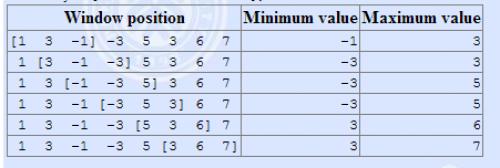1
2
3
4
5
6
7
8
9
10
11
12
13
14
15
16
17
18
19
20
21
22
23
24
25
26
27
28
29
30
31
32
33
34
35
36
37
38
39
40
41
42
43
44
45
46
47
48
49
50
51
52
53
54
55
56
57
58
59
60
61
62
63
64
65
66
67
68
69
70
71
72
73
74
75
76
77
78
79
80
81
82
83
84
85
86
87
88
89
90
91
92
93
94
95
96
97
98
99
100
101
102
103
104
105
106
107
108
109
110
111
112
113
114
115
116
117
118
119
120
121
122
123
124
125
126
127
128
129
130
131
132
133
134
135
136
|
#include <iostream>
#include <cstdio>
#include <cstring>
#include <cctype>
#include <algorithm>
#include <vector>
#include <string>
#include <stack>
#include <queue>
#define For(a,x,y) for (int a = x; a <= y; ++a)
#define Bak(a,y,x) for (int a = y; a >= x; --a)
using namespace std;
namespace FastIO {
void DEBUG(char comment[], int x) {
cerr << comment << x << endl;
}
inline int getint() {
int s = 0, x = 1;
char ch = getchar();
while (!isdigit(ch)) {
if (ch == '-') x = -1;
ch = getchar();
}
while (isdigit(ch)) {
s = s * 10 + ch - '0';
ch = getchar();
}
return s * x;
}
inline void __basic_putint(int x) {
if (x < 0) {
x = -x;
putchar('-');
}
if (x >= 10) __basic_putint(x / 10);
putchar(x % 10 + '0');
}
inline void putint(int x, char external) {
__basic_putint(x);
putchar(external);
}
}
namespace Solution {
const int MAXN = 1000000 + 10;
struct Queue {
int q[MAXN];
int head, tail;
Queue() {
memset(q, 0, sizeof(q));
head = 1;
tail = 0;
}
void push(int s) {
while (s >= q[tail] && head <= tail) --tail;
q[++tail] = s;
}
void push_back(int s) {
while (s <= q[tail] && head <= tail) --tail;
q[++tail] = s;
}
void pop() {
++head;
}
int front() {
return q[head];
}
int size() {
return tail - head + 1;
}
bool empty() {
return tail - head + 1;
}
void clear() {
Queue();
}
int __tail_location() {
return tail;
}
int __head_location() {
return head;
}
} q1, q2;
int n, k;
int seq[MAXN];
int id[MAXN];
void GetMax() {
For (i, 1, n) {
q1.push(seq[i]);
id[q1.__tail_location()] = i;
while (id[q1.__head_location()] <= i - k) q1.pop();
if (i >= k) FastIO::putint(q1.front(), ' ');
}
}
void GetMin() {
For (i, 1, n) {
q2.push_back(seq[i]);
id[q2.__tail_location()] = i;
while (id[q2.__head_location()] <= i - k) q2.pop();
if (i >= k) FastIO::putint(q2.front(), ' ');
}
}
}
int main(int argc, char *const argv[]) {
#ifdef HANDWER_FILE
freopen("testdata.in", "r", stdin);
freopen("testdata.out", "w", stdout);
#endif
using namespace Solution;
using namespace FastIO;
n = getint();
k = getint();
For (i, 1, n) {
seq[i] = getint();
}
GetMin();
puts("");
GetMax();
return 0;
}
|

